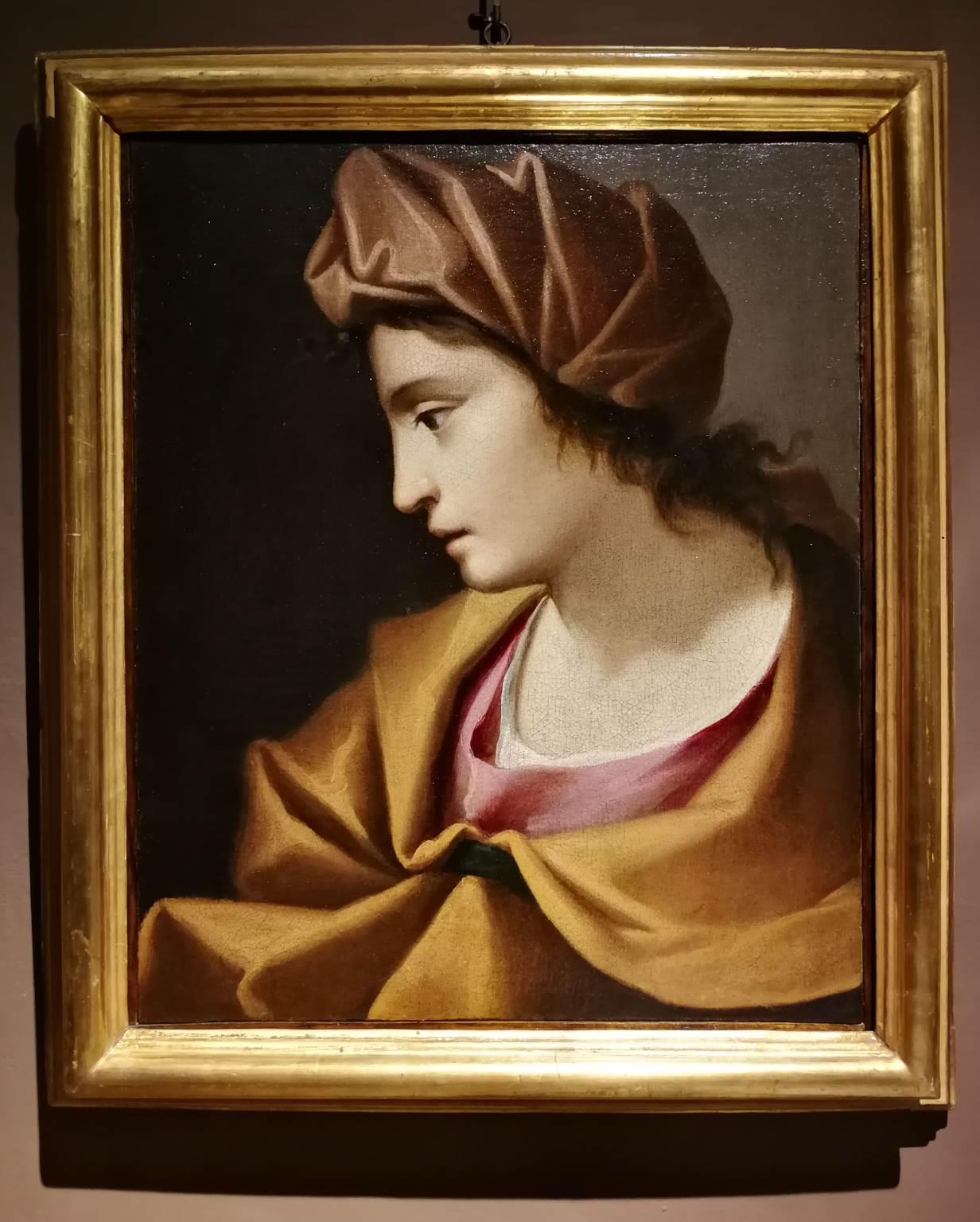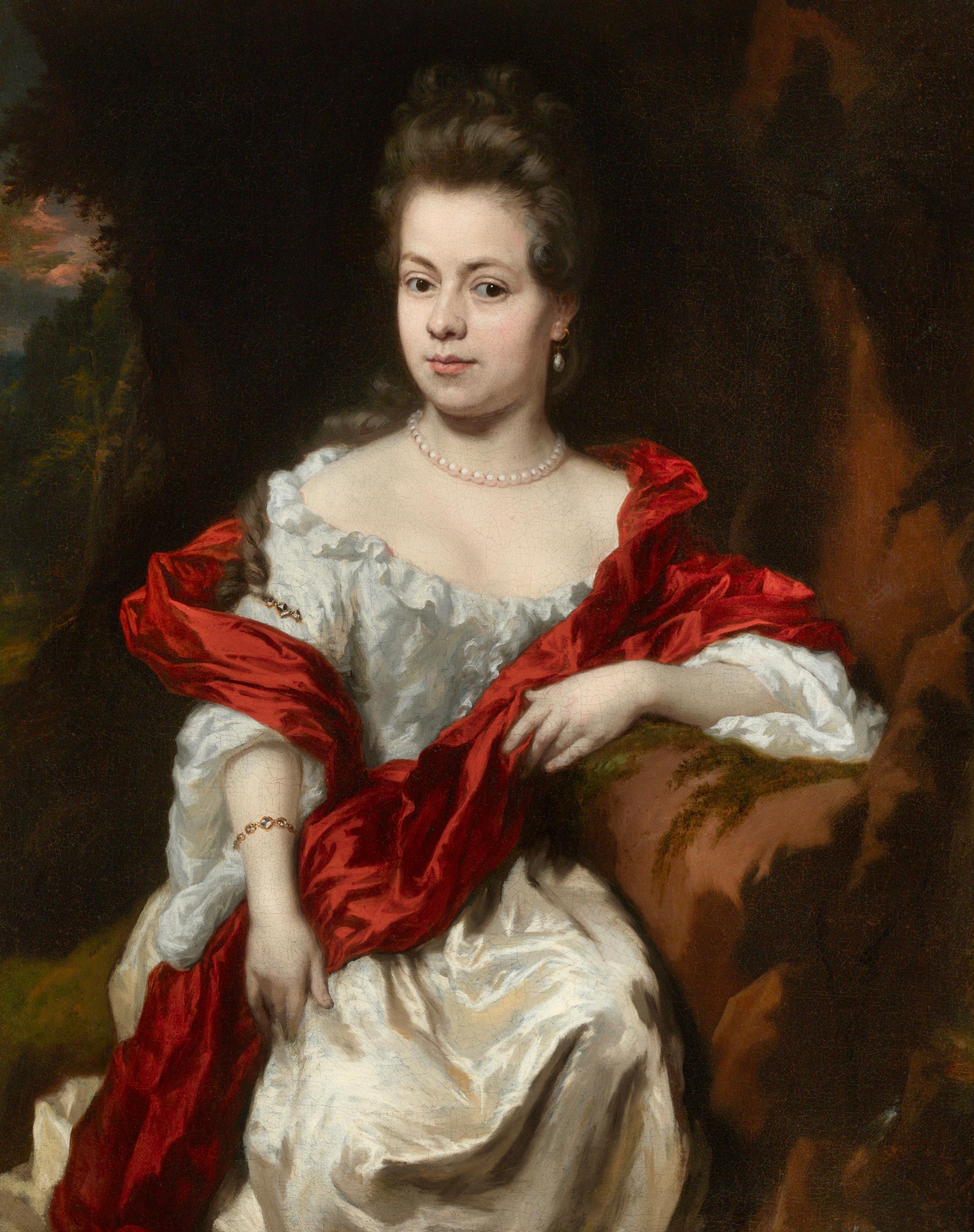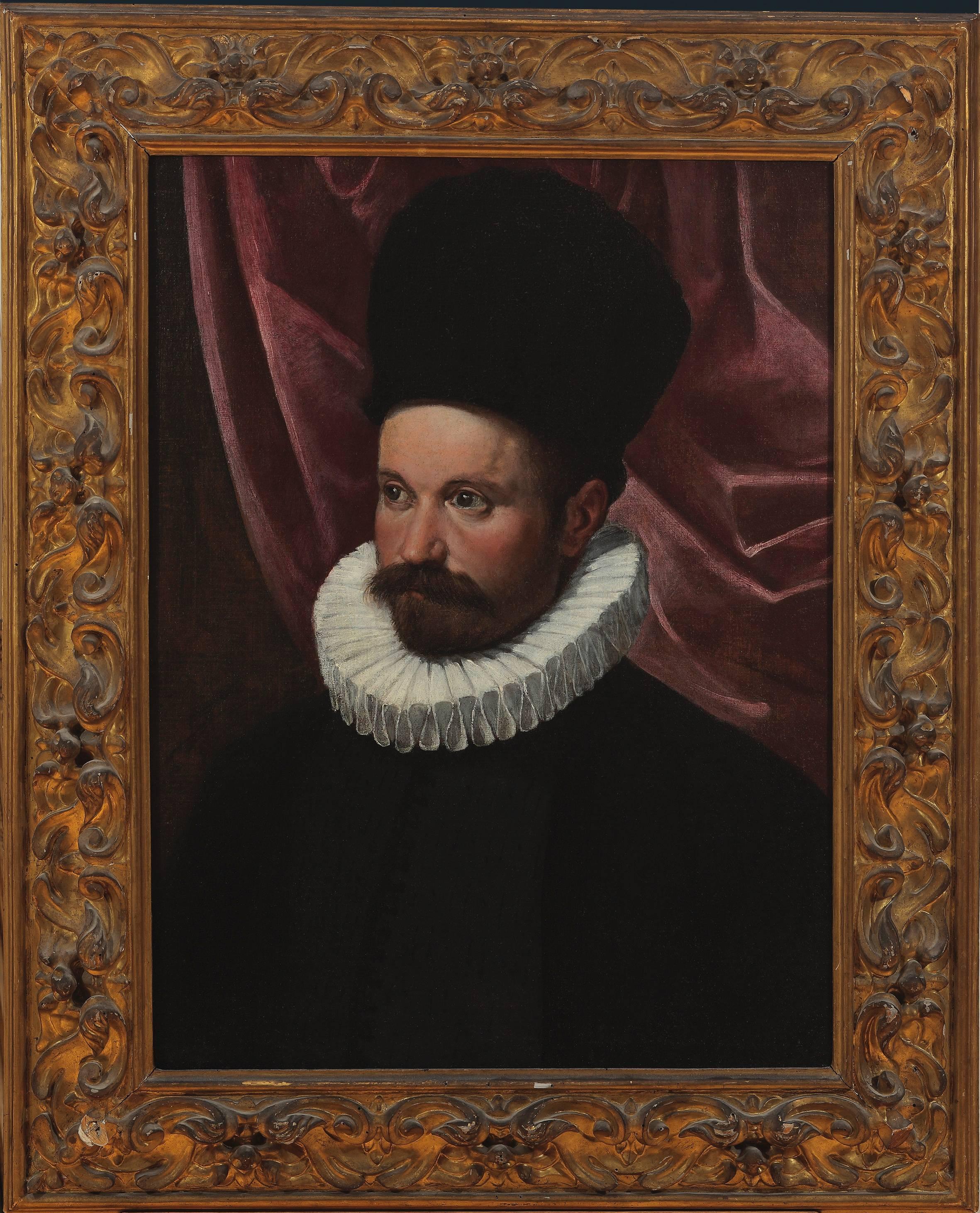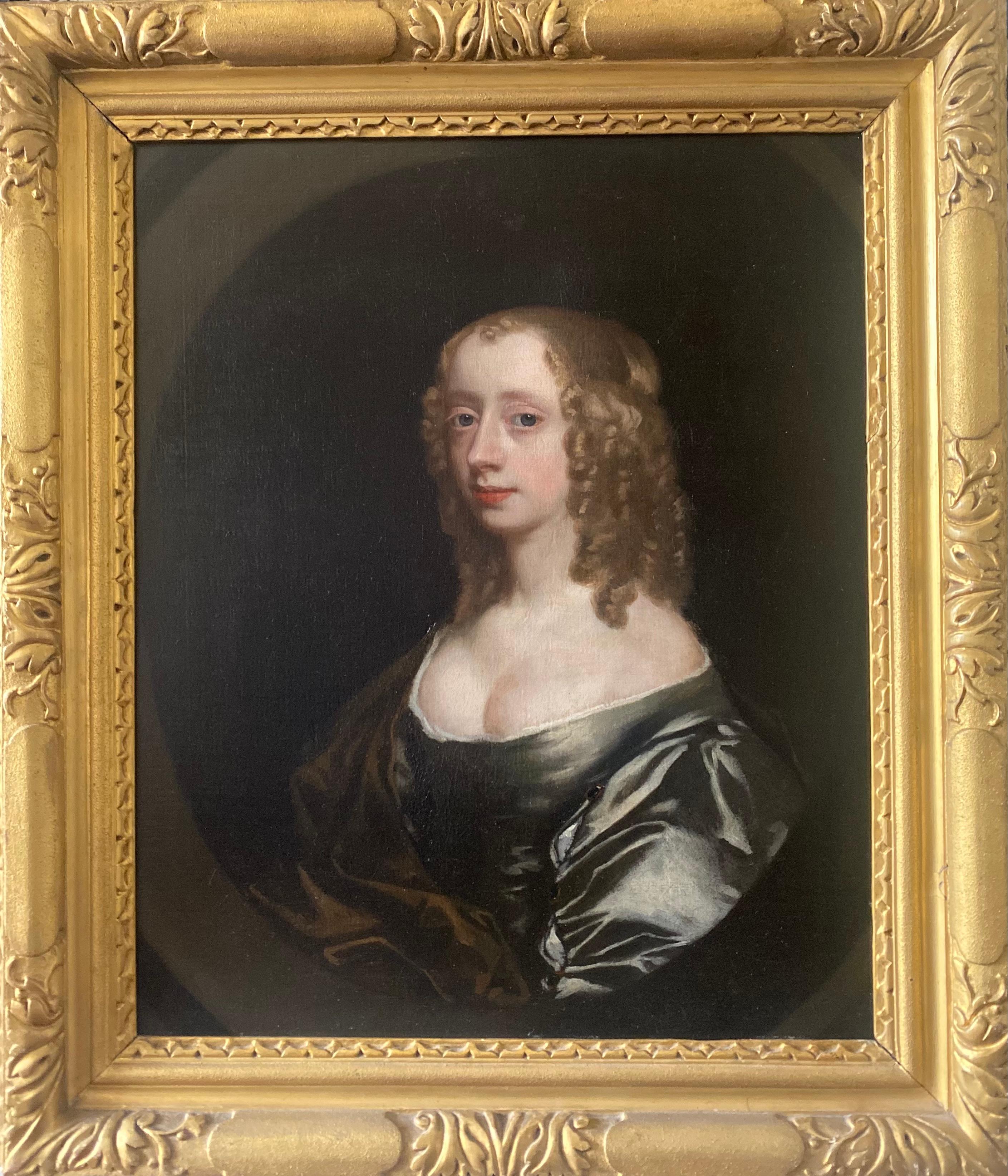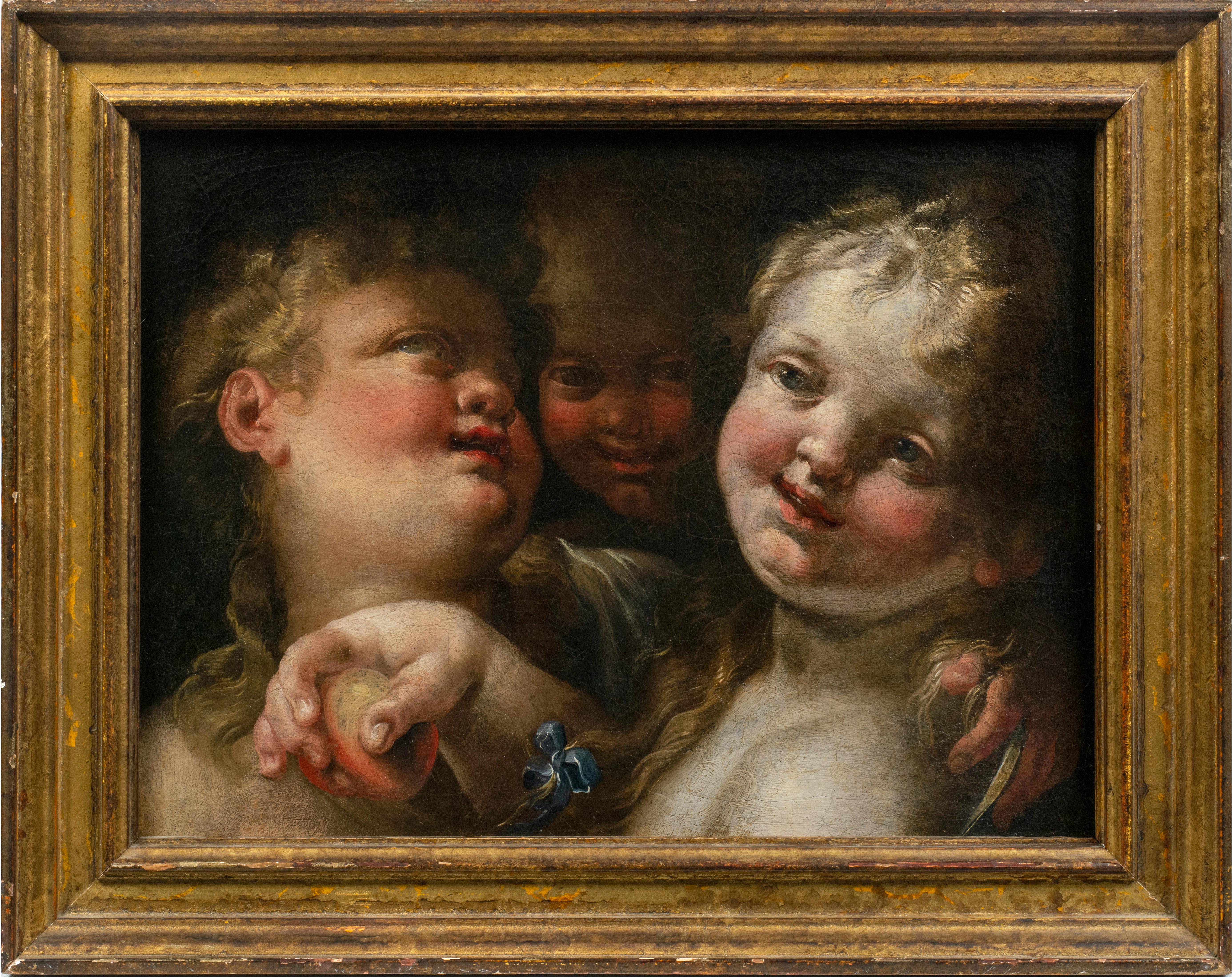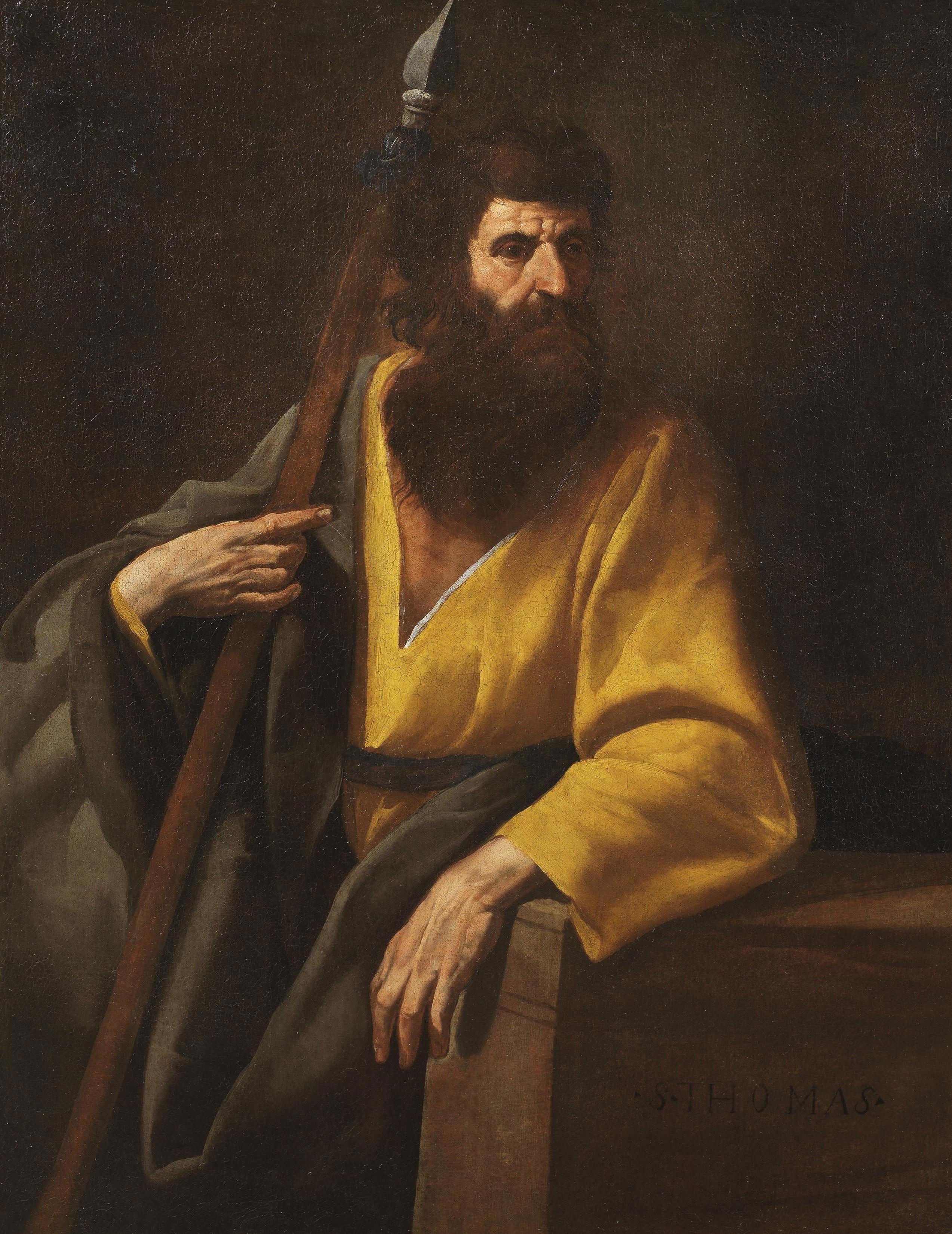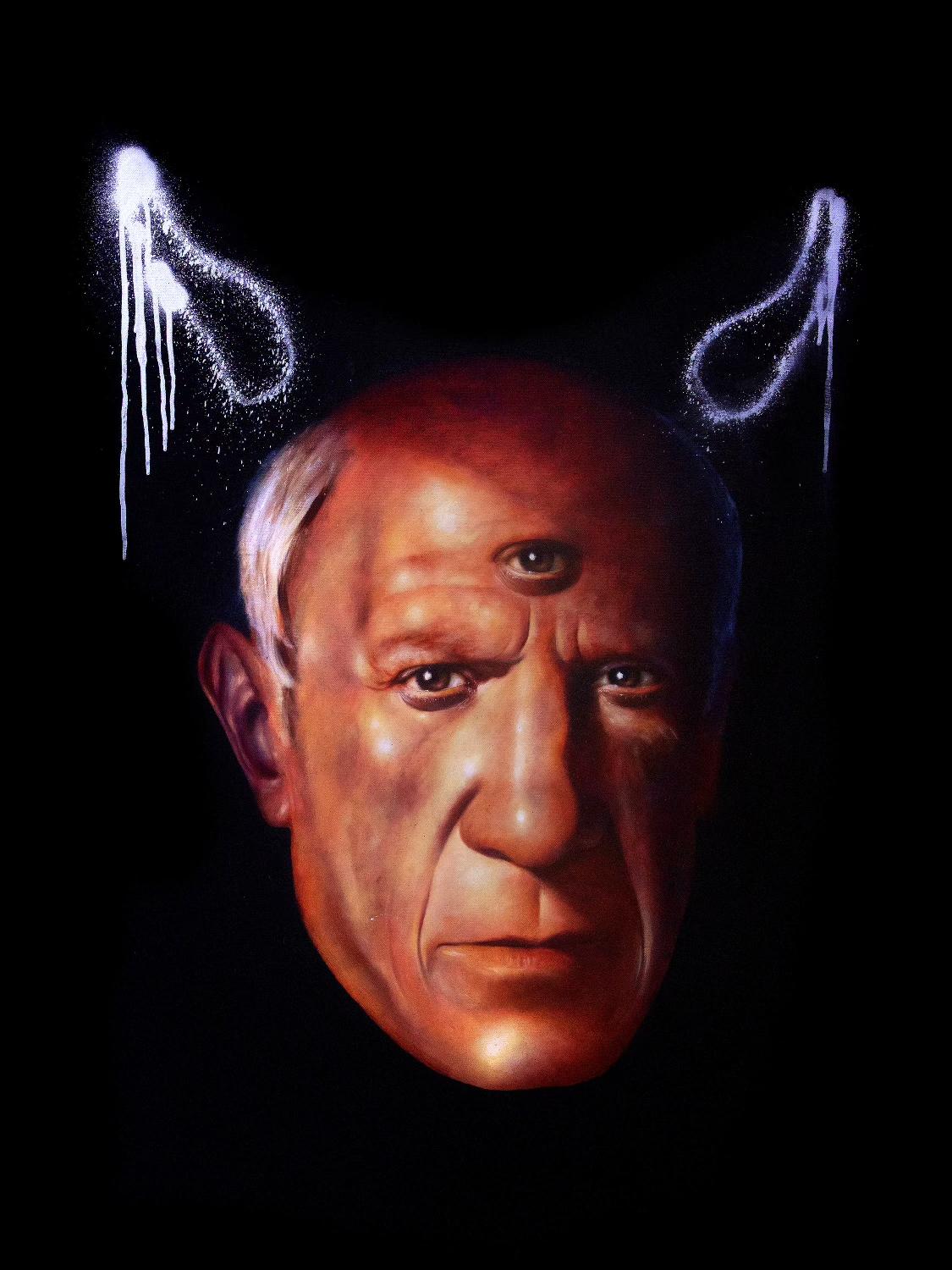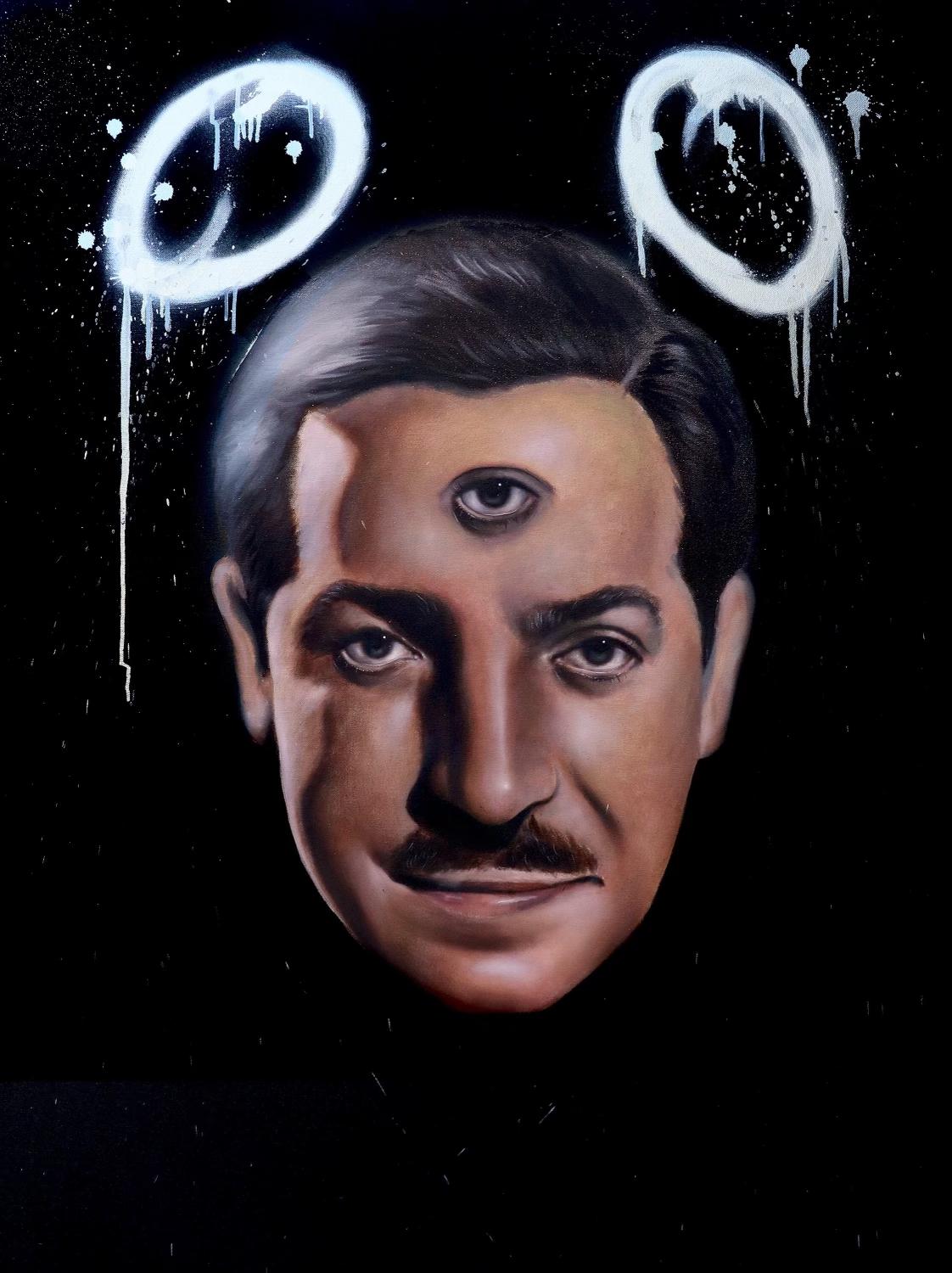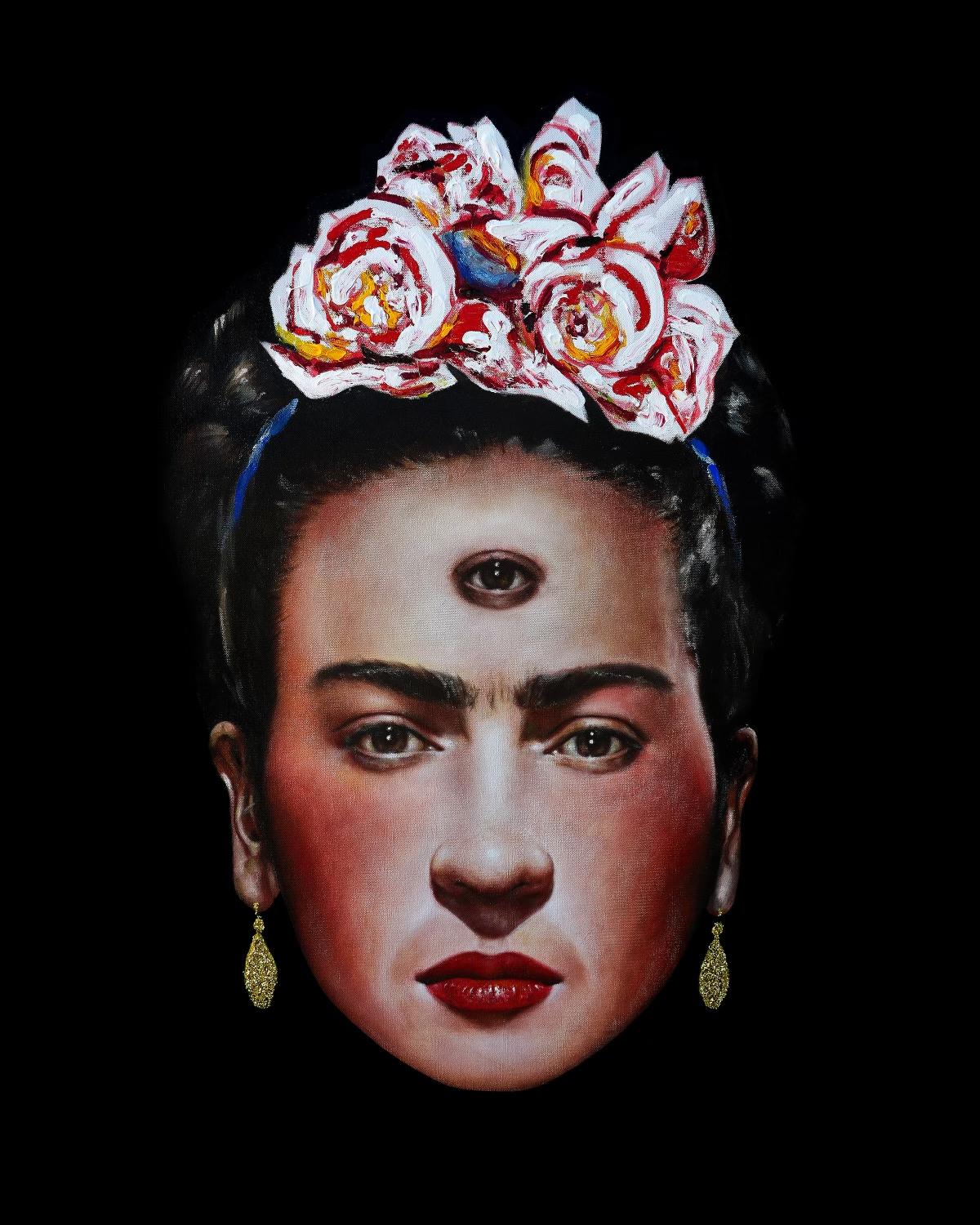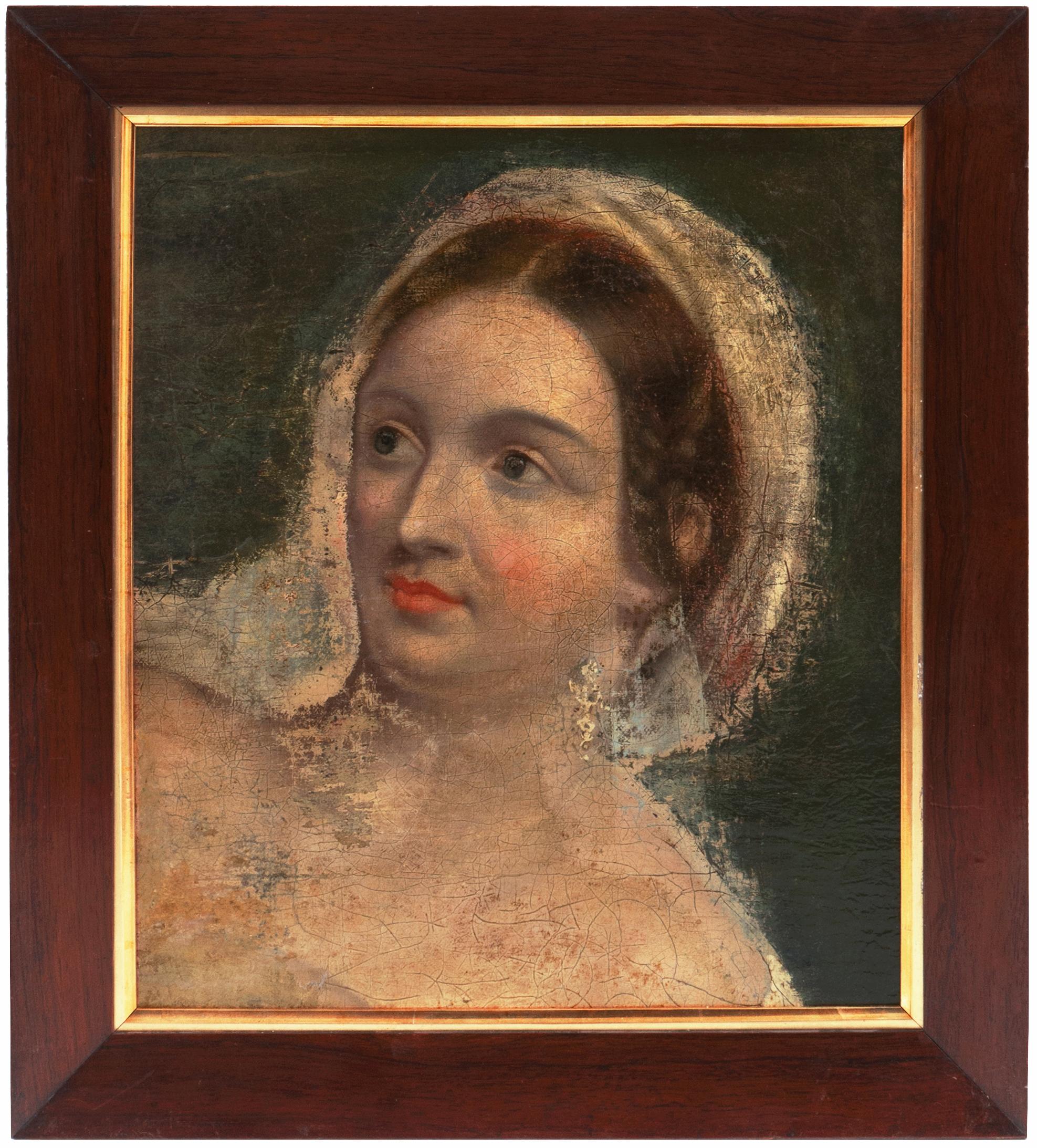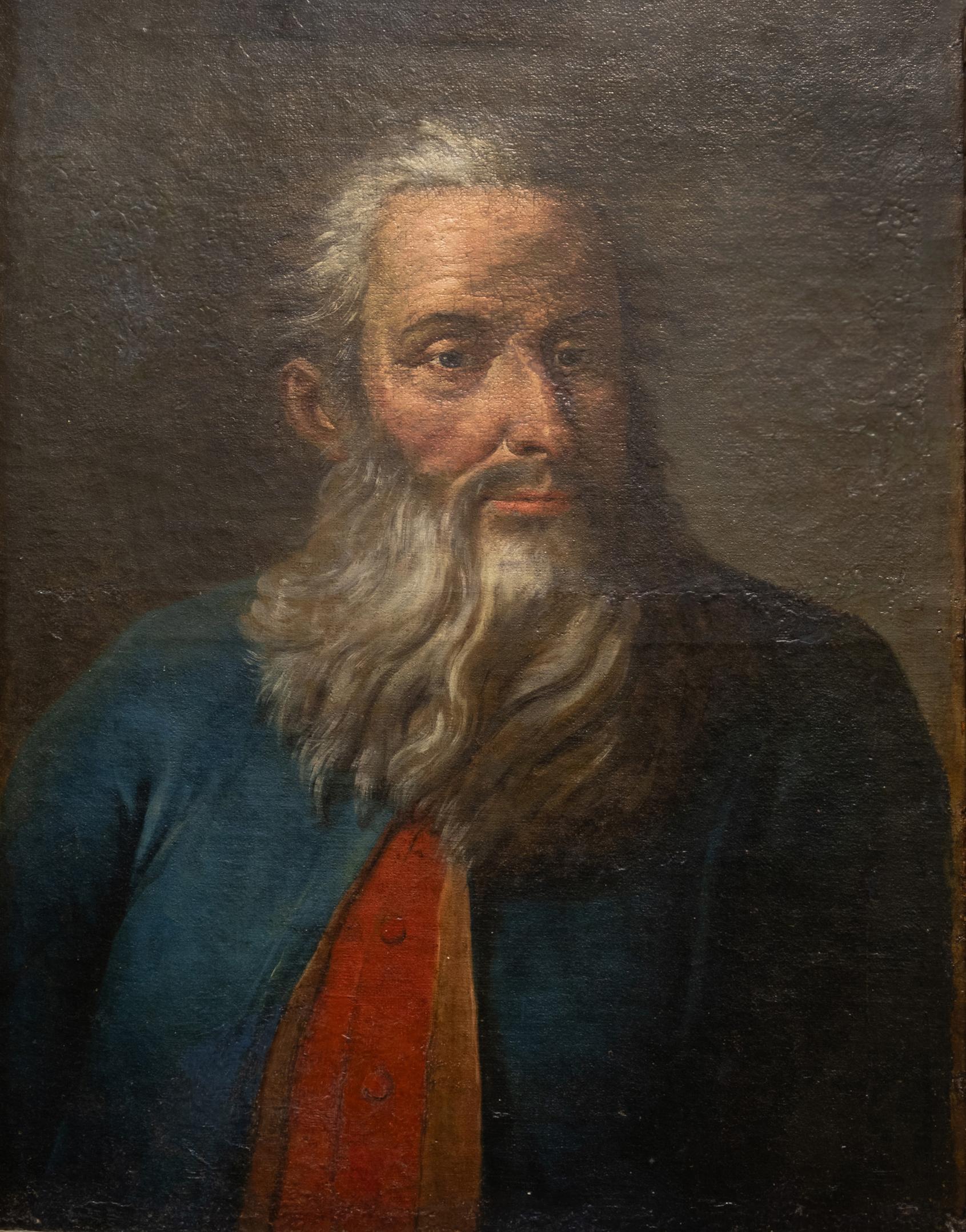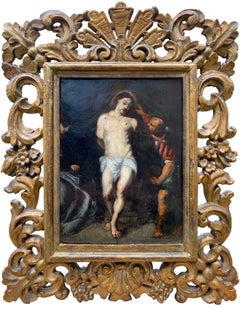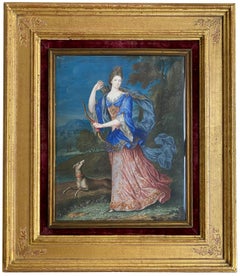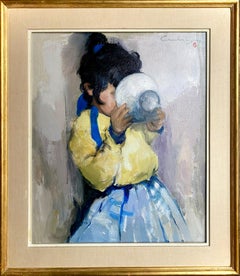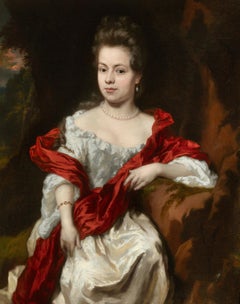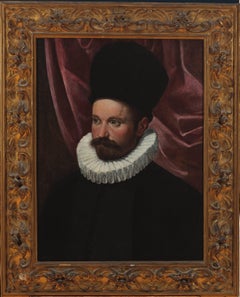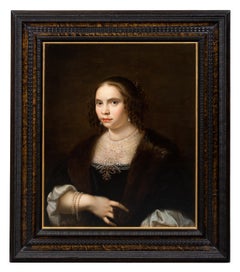
'Portrait of a Lady, circa 1650' by Cornelis Janssens van Ceulen (1593 – 1661)
View Similar Items
Video Loading
Want more images or videos?
Request additional images or videos from the seller
1 of 18
'Portrait of a Lady, circa 1650' by Cornelis Janssens van Ceulen (1593 – 1661)Circa 1650
Circa 1650
About the Item
- Attributed to:Cornelis Janssens van Ceulen (1593 - 1661, Dutch, British)
- Creation Year:Circa 1650
- Dimensions:Height: 38.19 in (97 cm)Width: 33.47 in (85 cm)Depth: 3.94 in (10 cm)
- Medium:
- Movement & Style:
- Period:Mid-17th Century
- Condition:The artwork is elegantly presented within a beautiful frame, impeccably preserved in its good condition. This piece is showcased in a state suitable for immediate gallery hanging, having undergone professional review.
- Gallery Location:Knokke, BE
- Reference Number:1stDibs: LU2006214751282
About the Seller
5.0
Gold Seller
Premium sellers maintaining a 4.3+ rating and 24-hour response times
Established in 1998
1stDibs seller since 2022
23 sales on 1stDibs
Typical response time: 19 hours
Authenticity Guarantee
In the unlikely event there’s an issue with an item’s authenticity, contact us within 1 year for a full refund. DetailsMoney-Back Guarantee
If your item is not as described, is damaged in transit, or does not arrive, contact us within 7 days for a full refund. Details24-Hour Cancellation
You have a 24-hour grace period in which to reconsider your purchase, with no questions asked.Vetted Professional Sellers
Our world-class sellers must adhere to strict standards for service and quality, maintaining the integrity of our listings.Price-Match Guarantee
If you find that a seller listed the same item for a lower price elsewhere, we’ll match it.Trusted Global Delivery
Our best-in-class carrier network provides specialized shipping options worldwide, including custom delivery.More From This Seller
View AllThe Flagellation of Christ, Old Master, Flemish School, Oil on copper
Located in Knokke, BE
The Flagellation of Christ
Old Master
Flemish School
17th century
Medium: Oil on copper
Dimensions: Image size 22 x 17 cm, frame size 39 x 31 cm
Category
17th Century Baroque Portrait Paintings
Materials
Copper
'Diana, Goddess of the Chase' by Artist 17th Century, French School, Circa 1660
Located in Knokke, BE
Artist 17th Century
French School
Circa 1660
'Diana, Goddess of the Chase'
Signature: not signed
Medium: tempera on paper applied to oak panel
Dimensions: image size 23.5 x 18.5 cm...
Category
17th Century Baroque Portrait Paintings
Materials
Paper, Egg Tempera, Wood Panel
Charles Swyncop, Brussels 1895 – 1970, Belgian Painter ‘Le Petit Déjeuner'
By Charles Swyncop
Located in Knokke, BE
Swyncop Charles
Brussels 1895 – 1970
Belgian Painter
‘Le Petit Déjeuner – A Breakfast’
Signature: Signed, monogram top right and on revers
Medium: Oil on canvas
Dimensions: Image size 60,50 x 50,50 cm, frame size 78 x 68,50 cm
Biography: Swyncop Charles was born in Brussels on March 21, 1895 emerged as a distinguished Belgian painter during the first half of the 20th century, leaving an indelible mark on the art world with his vibrant and captivating works. Born into a family with a passion for art, Charles inherited his artistic inclination from his older brother, Philippe Swyncop...
Category
Mid-20th Century Impressionist Portrait Paintings
Materials
Canvas, Oil
'Man with a Book' by Jean Laudy, 1877 – 1956, Dutch - Belgian Painter
By Jean Laudy
Located in Knokke, BE
Jean Laudy
Venlo 1877 – 1877 Sint-Lambrechts-Woluwe
Dutch-Belgian Painter
'Man with a Book'
Signature: Signed top right and on revers
Medium: Oil on canvas
Dimensions: Image size 8...
Category
Early 20th Century Impressionist Portrait Paintings
Materials
Canvas, Oil
‘Oriental Girls - Mediants à Tanger’, Jean François Portaels ( 1818 - 1895 )
Located in Knokke, BE
Jean François Portaels
1818 - Brussels - 1895
Belgian Painter
‘Oriental Girls - Mediants à Tanger, Maroc’
Signature: signed lower right ‘J. Portaels’
Medium: oil on canvas
Dimensions: image size 40,5 x 28,5 cm, frame size 67,5 x 56 cm
Biography: Jean François Portaels, also known as Jan Portaels, was a versatile Belgian painter born on April 3, 1818, in Vilvoorde and passed away on February 8, 1895, in Schaerbeek. He was celebrated for his genre scenes, biblical stories, landscapes, portraits, and Orientalist subjects. As a teacher and director of the Academy of Fine Arts of Ghent and the Académie Royale des Beaux-Arts in Brussels, Portaels significantly impacted Belgian art, becoming a pivotal figure in the Belgian Orientalist school. His works were known for their 'everyday elegance and feminine grace,' and he played a crucial role in influencing the next generation of Belgian artists, including notable figures like Théo van Rysselberghe.
Portaels was the son of a wealthy brewer who also served as Vilvoorde's mayor. Showing an early passion for drawing, he was sent to the Académie Royale des Beaux-Arts in Brussels in 1836, where he studied under François-Joseph Navez, a former student of Jacques-Louis David. Navez invited him to his studio, which was renowned at the time, allowing Portaels to refine his skills alongside other talented students like Charles de Groux and Joseph Stallaert.
In 1841, Portaels moved to Paris, enrolling at the Ecole des Beaux-Arts and studying under Paul Delaroche. He became influenced by the emerging Orientalist movement, which was gaining traction in Paris. In 1842, he won the Grand Prix de Rome, which funded his travels across Italy and other regions, including Morocco, Algeria, Egypt, Lebanon, Judea, Spain, Hungary, and Norway. These journeys profoundly influenced his artistic vision, particularly his Orientalist works.
Upon his return to Belgium in 1847, Portaels was appointed Director of the academy in Ghent. In 1849, he married Marie Hélène Navez, the daughter of his first teacher. Despite being offered the directorship of the Brussels Academy, he initially declined, opting to preserve his independence. He later accepted a teaching position at the Academy and eventually became its director in 1878, succeeding Eugène Simonis.
Portaels was known for his broad range of artistic talents, including history painting, portraiture, and genre art. He was particularly recognised for his Orientalist depictions, often portraying the 'Oriental woman' with distinctive features like arched eyebrows and almond-shaped eyes. His style, marked by charm and elegance, distinguished him from the dominant artistic movements of Classicism and Romanticism.
He was a pioneer in monumental art in Belgium, working with Jean Baptiste van Eycken to introduce fresco techniques like water glass painting...
Category
Mid-19th Century Impressionist Portrait Paintings
Materials
Canvas, Oil
'Le Jugement de Pâris' by Georges Charles Dufresne (1876 – 1936) French Painter
Located in Knokke, BE
Georges Charles Dufresne
Millemont 1876 – 1936 La Seyne-sur-Mer
French Painter
'Le Jugement de Pâris – The Judgment of Paris'
Signature: signed lower right 'dufresne'
Medium: oil o...
Category
Early 19th Century Fauvist Landscape Paintings
Materials
Canvas, Oil
You May Also Like
English 17th century portrait of John Ludford Esquire
By Mary Beale
Located in Bath, Somerset
Portrait of John Ludford (1653-1681), wearing a lace jabot and brown and gold trimmed cloak in a feigned stone oval cartouche. Inscribed 'John Ludford, Esq, nat. 14th March 1653, Ob,...
Category
Late 17th Century Baroque Portrait Paintings
Materials
Canvas, Oil
$11,911 Sale Price
20% Off
Dipinto ritratto femminile figurativo barocco emiliano del XVII secolo
By Girolamo Negri called Il Boccia
Located in Florence, IT
olio su tela, 62 x 51 cm (senza cornice)
Il dipinto è stato per lungo attribuito alla mano di Francesco Gessi, allievo di Guido Reni, come riporta un'iscrizione a matita datata 1945...
Category
Late 17th Century Baroque Figurative Paintings
Materials
Canvas, Oil
Portrait of Noble Lady
By Nicolaes Maes
Located in New Orleans, LA
Signed and dated "N MAE / 1691" (lower right)
Oil on canvas
A masterful example of 17th-century Dutch portraiture, this magnificent oil on canvas comes alive with luminous color, dramatic contrast and extraordinary detail. The work was composed by Nicolaes Maes, an artist widely regarded as the most prominent portrait painter of his era in Amsterdam. Fashionably styled, Portrait of a Noble Lady exemplifies the mature style of Maes, executed with the same artistry and attention to detail he imparted on his most important private commissions.
This work by Maes comes from the second half of his career and follows in the rich tradition of the great Flemish Baroque painters Peter Paul Rubens and Anthony van Dyck. Like these artists, Maes excels at not only capturing his subjects with a technical perfection but also their inherent elegance and grace. The sitter is draped in luxurious white and red silks and pearls, underscoring the importance and prosperity of his wealthy clientele. She is placed against a dark backdrop, enabling a striking chiaroscuro effect characteristic of the artist’s portraits.
Maes’s immense talent for detail and composition is clearly evident. In both palette and proportion, it embodies the somewhat austere style preferred by the artist, which emphasized a painstaking study of the costumes, hairstyles and accessories of his subjects. Such elaborate and highly detailed costuming in portraiture was a fashionable way to show one's wealth in the 17th century, particularly among the emerging class of wealthy merchants. Similar works by the painter can be found in the Rijksmuseum (Amsterdam), National Gallery (London), National Gallery of Art (Washington, D.C.), Metropolitan Museum of Art (New York) and Philadelphia Museum of Art, among others.
Nicolaes Maes was born in Dordrecht in 1634 to a prosperous cloth merchant. Around 1848, he moved to Amsterdam to study under Rembrandt for several years before returning to his native Dordrecht, where he established himself as a painter of genre scenes and portraits. In the 1650s, Maes traveled to Antwerp where he studied the work of Flemish artists such as Peter Paul Rubens, Anthony van Dyck and Jacob Jordaens...
Category
17th Century Baroque Portrait Paintings
Materials
Oil, Canvas
Portrait of a Gentleman
By Ippolito Scarsella (Scarsellino)
Located in New York, NY
Provenance: Suida-Manning Collection, New York
Private Collection
Exhibited: Venetian Paintings of the Sixteenth Century, Finch College Museum of Art, New York, October 30-December 15, 1963, no. 31.
Veronese & His Studio in North American Collections, Birmingham Museum of Art, Oct. 1-Nov. 15, 1972, and Montgomery Museum of Fine Arts, Dec. 5-Dec. 31, 1972
Literature: Robert L. Manning, A Loan Exhibition of Venetian Paintings of the Sixteenth Century, exh. cat. New York 1963, cat. no. 31ill., as by Veronese
Stephen Clayton and Edward Weeks, eds., introduction by David Rosand, Veronese & His Studio in North American Collections, Birmingham 1972, as by Veronese, p. 38 ill.
Terisio Pignatti, Veronese, Venice 1976, I, p. 199, cat. no. A225, II, fig. 908, as attributed to Veronese
Terisio Pignatti and Filippo Pedrocco, Veronese; catalogo completo dei dipinti, Florence 1991, no. 54°, as attributed to Veronese.
Terisio Pignatti and Filippo Pedrocco, Veronese, Milan 1995, II, pp. 517-518ill., cat. no. A 56, under attributed paintings, by Veronese and workshop)
John Garton, Grace and Grandeur; The Portraiture of Paolo Veronese, London-Turnhout 2008, p. 237, fig. 77, cat. no. R16, as workshop of Veronese.
Scarsellino’s art is widely regarded as critical link between the Renaissance and the Baroque styles in Emilian painting; not only was he an important transmitter of the heritage of the Renaissance, but he was also open to innovative ideas, and was one of the earliest to experiment with the trend to naturalism that would become fundamental to art of the new century. Born around 1550, he received his earliest training from his father Sigismondo, an architect and painter; it was probably while working at his father’s side as a youth that he acquired the nickname Scarsellino, or “little Scarsella”. After absorbing the principles of his art in Ferrara and Parma, he went to Venice in 1570, staying for four years and working in the shop of Veronese. In the following decade, his art —especially in terms of its piety and its development of landscape— demonstrates a strong sympathy with that of the Carracci, with whom he worked in 1592-1593 at the Palazzo dei Diamanti in Ferrara. Maria Angela Novelli and later Alessandra Frabetti both propose that Scarsellino traveled to Rome, although such a trip has not been documented; if he did travel to Rome, it probably would have occurred during the years that Scarsellino’s colleagues Agostino and Annibale Carracci were there, that is, beginning in 1595 and until 1609. The last decades of Scarsellino’s career again involve stylistic experimentation, this time in a manner that would bring his work very close to the progressive figurative naturalism of Carlo Bononi and prepare the way for Guercino.
The present portrait of a distinguished gentleman had been long thought to be by Paolo Veronese and was in fact attributed to him by such distinguished connoisseurs as Adolfo Venturi and Wilhelm Suida. The portrait’s style is, however, distinct from Veronese’s, although clearly indebted to it, and the attribution to the young Scarsellino is wholly convincing. The painting would then date from the 1570s – a date confirmed by the costume the subject wears. The puffed hat that appears in the painting had a rather short-lived vogue in the early 1570s. One sees it in Giambattista Moroni’s Portrait of Count...
Category
18th Century and Earlier Baroque Portrait Paintings
Materials
Canvas, Oil
English 17th century portrait of a lady
By Sir Peter Lely
Located in Bath, Somerset
A 17th century English portrait of a lady by Sir Peter Lely (1618-1680), half-length in a painted feigned oval, wearing a green silk gown with chestnut coloured cloak over one shoulder, her fair hair curled in the fashionable ringlet style of the period. Oil on canvas in an English giltwood 'Lely' frame.
We are grateful to Diana Dethloff and Catharine MacLeod (who are currently working on a Lely catalogue raisonné) for their confirmation of Lely as the artist from photograph analysis of this previously unidentified early work.
Provenance:
Private collection Nottingham until 2021
Mellors and Kirk sale December 2000, lot 1173
The sitter is likely to have been from an upper class or aristocratic family in court circles, who were the main source of Lely`s patronage. The simple composition serves to highlight the beauty of the sitter through portraying her pale decolletage and complexion, set against the gentle gaze of her blue eyes, the soft blush of her cheeks and her full red lips.
Peter Lely (1618-1680) was originally of dutch origin and became Principle Painter to the King in 1661, following in the footsteps of Van Dyck who had died in 1641. He dominated the portrait painting scene in England for over 20 years, creating a distinctive 'court look' in his work which had a strong influence on many other artists. He had an extremely successful and popular portrait practice which meant that he soon had to develop production methods that could accommodate the high demand for portraits, and also for copies and versions of them which were given as gifts to family and courtiers. The use of studio assistants was a common practice for busy artists and as with Van Dyck, Lely is known to have used specialist assistants to execute particular parts of his paintings. Artists who worked in Lely`s studio included John Baptist Gaspars who specialised in drapery painting, William Wissing, John Greenhill...
Category
17th Century Baroque Portrait Paintings
Materials
Oil, Canvas
$23,823 Sale Price
20% Off
Three Angels
By Domenico Piola the Elder
Located in New York, NY
Provenance:
Robert L. and Bertina Suida Manning, New York, until 1996
Private Collection, USA
One of the leading artists in Genoa during the second half of the seventeenth century, Domenico Piola came from a successful family of artists, renowned for their many illusionistic ceiling programs throughout Genoese churches and palaces. A prolific draughtsman and painter, Domenico oversaw an extremely productive studio. In addition to his collaborations with numerous other artists, Domenico also provided many designs for book illustrations and prints that circulated throughout Europe, earning him international exposure and high acclaim in his own day.
As Dr. Anna Orlando has indicated (written communication), the present work is an early work by Piola, datable from the late 1640s. At this time the young artist came strongly under the influence of Castiglione and Valerio Castello, while admiring the works of Giulio Cesare Procaccini. Piola’s works from this period are exuberant and fluid, and the artist’s love of portraying children is evident from the angels and putti that populate both his altarpieces and more intimate paintings.
The present work depicts three angels...
Category
17th Century Baroque Figurative Paintings
Materials
Oil, Canvas
Recently Viewed
View AllMore Ways To Browse
Tudor Tapestry
Mid Century Queen Royal Jewelry
Daniel Low
Miniature Portrait Case
Lace Tapestry
Antique German Tapestry
Indigo Tapestry
Antique Tapestry Pictures
Antique Picture Frames 1800S
Flemish Blue Tapestry
Scottish Pearl
5 Strand Pearl Bracelet
Pearl 3 Strand Bracelet
Antique Human Bones
Miniature Rembrandt
Portrait Miniatures 1800s
17th Century English Tapestry
Antique Scottish Pearls
